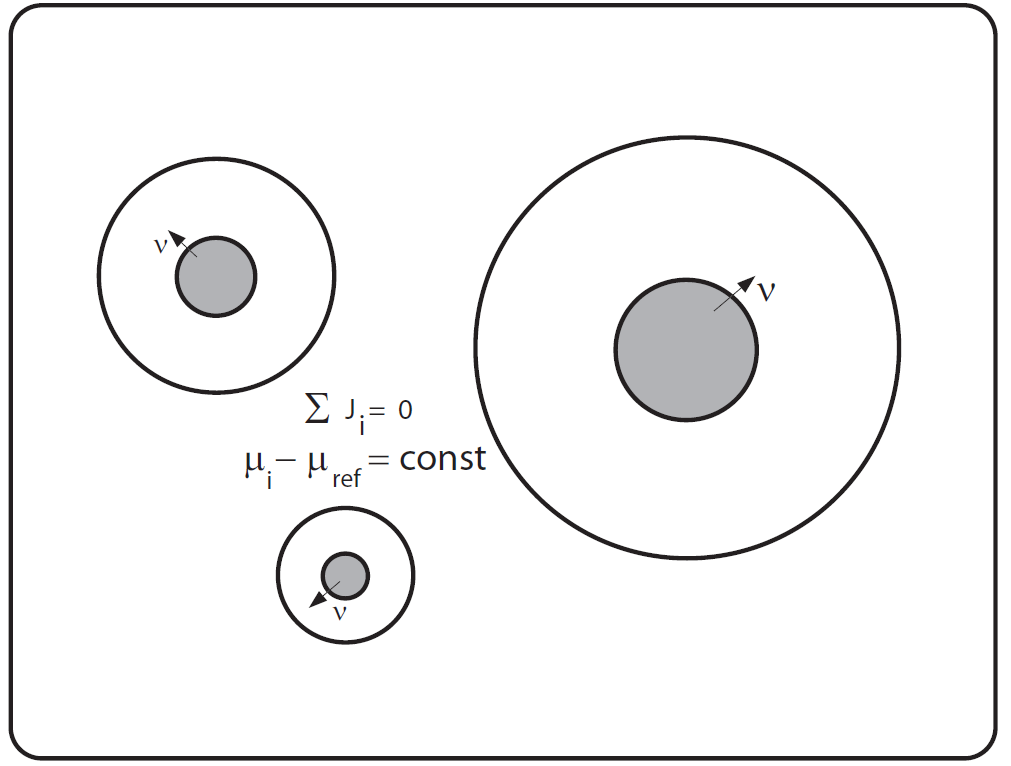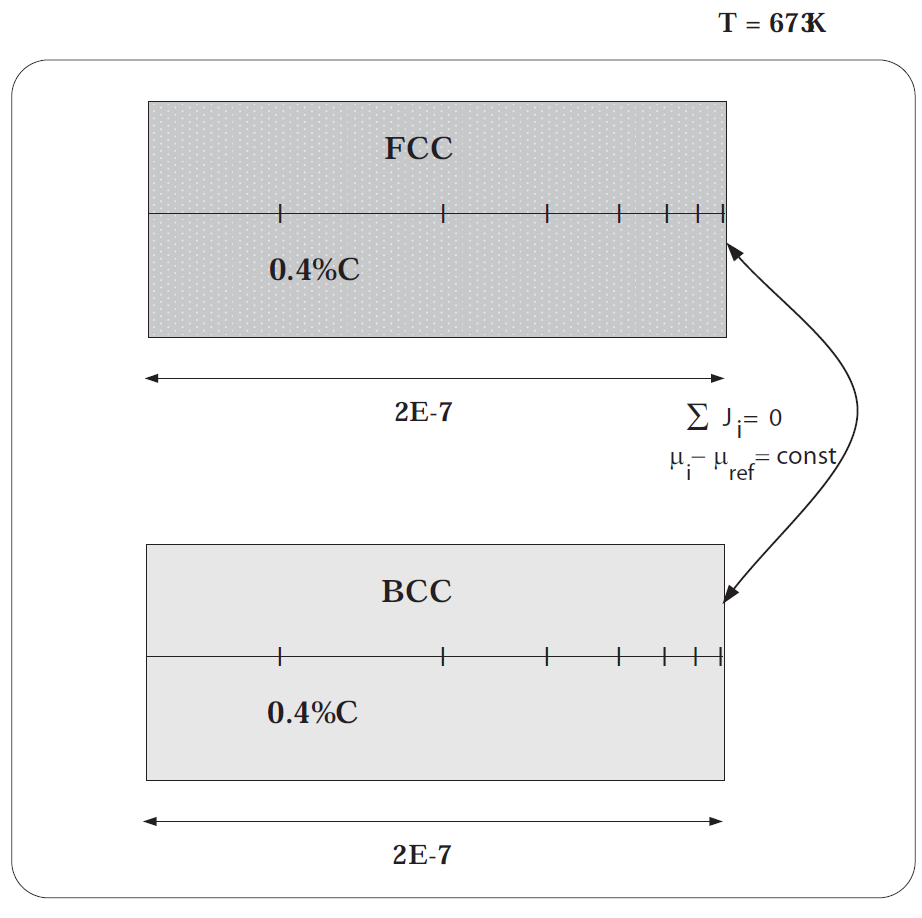Cell Calculation Examples
Carbon cannon in ferrite/austenite (α/γ): Fe-C system, two-cell calculation
This example simulates what happens to a ferrite plate that has inherited the carbon content of its parent austenite. The ferrite plate formed is embedded in an austenite matrix. This setup corresponds to a proposed mechanism for formation of Widmannstätten ferrite or for the ferrite phase of the bainite structure. It is assumed that the phase boundary between ferrite and austenite is immobile, this is achieved in the simulation by putting the ferrite and the austenite in two different cells. Also see [1993Hil].
Cementite dissolution in an Fe-Cr-C alloy: Three particle sizes and three different cells
This example calculates the dissolution of cementite particles in an austenite matrix. This is the same as exc1 except that there are three particle sizes. Altogether six particles are considered using three different cells. This is to be able to represent some size distribution among the cementite particles. Also see [1991Liu].
[1991Liu] Z.-K. Liu, L. Höglund, B. Jönsson, J. Ågren, An experimental and theoretical study of cementite dissolution in an Fe-Cr-C alloy. Metall. Trans. A 22, 1745–1752 (1991).
[1993Hil] M. Hillert, L. Höglund, J. Ågren, Escape of carbon from ferrite plates in austenite. Acta Metall. Mater. 41, 1951–1957 (1993).


